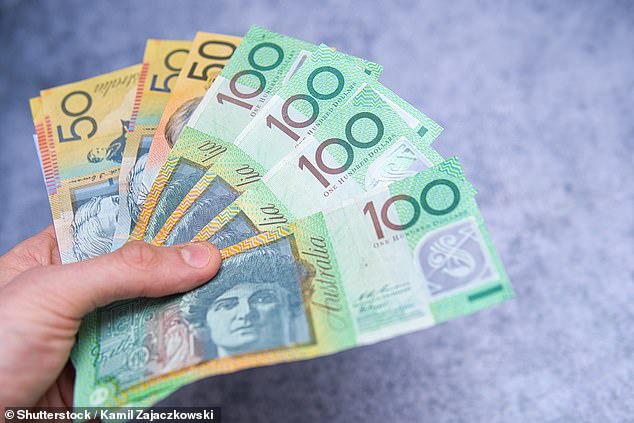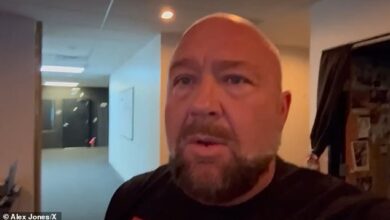The cheapest mortgage rate in Australia now that banks are cutting interest rates

Australian borrowers are now being enticed with much lower fixed-rate mortgages, amid predictions of big rate cuts in 2025.
Macquarie Bank on Thursday cut its two- and three-year fixed rate by 20 basis points to 5.39 percent – now the lowest mortgage rate in Australia, barring a green loan.
Four- and five-year fixed rates were cut by an even more dramatic 40 basis points, also to 5.39 percent, for borrowers with a 30 percent mortgage deposit.
Macquarie’s fixed rates are lower than the most competitive variable rate of 6.14 percent.
But their lowest fixed rate is not much lower than Australia’s lowest variable rate of 5.75 percent, offered by Abal Banking, a subsidiary of Arab Bank.
The big banks are offering variable interest rates starting with a ‘six’ and fixed rates starting with a ‘five’, meaning borrowers have been inundated with tempting offers in recent months.
Financial markets expect the Reserve Bank to cut cash rates four times next year, from the existing 12-year high of 4.35 percent.
But before borrowers opt for a lower fixed rate, they should be aware that they could miss out on even better deals in 2025.
They also face hefty cancellation fees, which could run into the tens of thousands of dollars, if they change their mind about setting their mortgage rate as the RBA continues to cut rates.
Sally Tindall, Canstar’s director of data insights, said fixing mortgage rates is still a big gamble now, as banks are still likely to cut both their fixed and variable rates.

Australian borrowers are now being tempted with lower fixed rate mortgages, amid predictions of big rate cuts in 2025 and 2026
“For someone who wants to pay as little interest as possible, it’s a gamble because we just don’t know what the cash rate and what the mortgage rate will do over the fixed rate period,” she told Daily Mail Australia.
‘Once you’re stuck, you have to ride out that fixed rate.
“We can never be 100 percent sure.”
When the Reserve Bank cuts interest rates, those who have already locked in their mortgages will have to pay a fee of tens of thousands of dollars if they want to get out of the lockup.
“You can often face expensive break fees because the bank loses money if you break the contract, and they can charge you for any losses,” Tindall said.
The 30-day interbank futures market expects rate cuts to begin in February next year and has priced in four Reserve Bank rate cuts in 2025, which would push spot rates down to 3.35 percent for the first time since March 2023.
The Commonwealth Bank is even more optimistic. Australian economics chief Gareth Aird predicts five rate cuts by the end of 2025, which would push cash rates down to 3.1 percent for the first time since February 2023.

Sally Tindall, Canstar’s director of data insights, said fixing mortgage rates is still a big gamble now, as banks are still likely to cut both their fixed and variable rates.
The generous rate cuts forecast in 2025 will not reverse the RBA’s 13 rate hikes in 2022 and 2023, which were the most aggressive since the late 1980s.
But they would represent the biggest relief in a year since June 2019 to March 2020, when interest rates were cut by 125 basis points during the bushfires and the outbreak of the corona crisis.
“As we get closer to a cash rate cut, we expect to see more fixed interest rates fall,” Ms Tindall said.
‘Over the past three months it has literally rained fixed interest rate cuts.’
Fixed-rate mortgages made up less than 2 percent of new and refinanced mortgages in July, Australian Bureau of Statistics data shows.
This was well below the all-time high of 46 per cent in July 2021, when the Reserve Bank cash rate was at a record low 0.1 per cent and banks were offering fixed mortgage interest rates starting with a ‘two’ or in some cases a ‘ An’.
“At the moment, fixing is completely in the genes of borrowers – the future is still very uncertain,” Ms Tindall said.
‘People choose to stay on a variable rate because they believe the consequences of doing it wrong are less risky than locking in a fixed rate, only to have the variable rate plummet and give them an uncompetitive mortgage rate, especially if A mortgage is the largest monthly expense for many families.’

The 30-day interbank futures market expects rate cuts to begin in February next year and has priced in four Reserve Bank rate cuts in 2025, which would push spot rates down to 3.35 percent for the first time since March 2023.
Lower wholesale funding costs also mean banks can continue to cut variable mortgage rates as the RBA eases monetary policy, with underlying inflation expected to fall within the 2 to 3 percent target at the end of 2025.
Those considering fixing their mortgage rates should remember what happened in early 2008 when rates rose twice, to a 12-year high of 7.25 per cent, after which the RBA hiked rates six times between September 2008 and April 2009 reduced.
This saw the cash rate more than halved to 3 percent – falling to levels not seen since the 1960s – when the RBA began massive cuts of 100 basis points in October, December and February.
Those who set their mortgage rates at 9 percent were burned when the Reserve Bank cut rates to stimulate the economy during the global financial crisis.
“It was one of the many reasons why Australians aren’t big fixers – a lot of people locked in rates just before the GFC because they thought rates were going to rise and they locked in what ended up being very high rates. just a fixed rate so the GFC would rise and the cash rate would start to fall,” Ms Tindall said.
However, variable rate borrowers should also be aware that the major banks did not fully implement the RBA rate cuts in 2020.
But they can always negotiate a better deal, even before the rate cuts start.
“Many borrowers will decide to stay on a variable rate, but know that variable rate is by definition negotiable, so if you want to get a rate cut in 2024, pick up the phone at your bank and negotiate with them,” she says. said.




